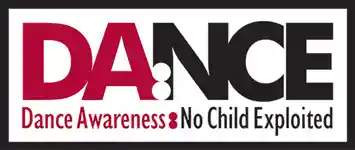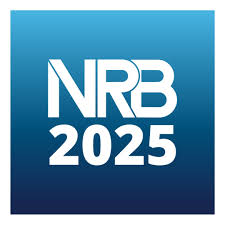 It was a joy to attend and speak in Anaheim at the 2019 CAHPERD(California Health Physical Education Recreation and Dance) Conference. Their educational foundation emphasized current cultural trends about the importance of body health. That provoked me to think about an LA Times article from August 19, 2018 that I read last summer which discussed how adult professionals can easily stray from healthy standards of care. It’s a difficult but timely article. From USA gymnastics to churches and dance studios who cover up sexual abuse, it is important for institutions to call out and resist cultural trends that are unhealthy. “If that tone is set well and is healthy, then the system will be healthy. You have to have systems in place to identify when something wrong, unhealthy or inappropriate occurs,” says James Campbell Quick, a University of Texas professor, “What matters is how they’re tackled by the leadership.” ~ LA Times
It was a joy to attend and speak in Anaheim at the 2019 CAHPERD(California Health Physical Education Recreation and Dance) Conference. Their educational foundation emphasized current cultural trends about the importance of body health. That provoked me to think about an LA Times article from August 19, 2018 that I read last summer which discussed how adult professionals can easily stray from healthy standards of care. It’s a difficult but timely article. From USA gymnastics to churches and dance studios who cover up sexual abuse, it is important for institutions to call out and resist cultural trends that are unhealthy. “If that tone is set well and is healthy, then the system will be healthy. You have to have systems in place to identify when something wrong, unhealthy or inappropriate occurs,” says James Campbell Quick, a University of Texas professor, “What matters is how they’re tackled by the leadership.” ~ LA Times
 But how to lead? As Kim Churches, chief executive of the American Assn. of University Women says, “We have to take action because we have to make sure we’re creating the cultures we want in our society. At CAHPERD, I talked about leadership and the importance of educational standards in dance. Non reflective cultural trends take us off target. Knowing educational standards (based on research) lead to healthy movement choices, and often communicate an artistic message to onlookers. It’s a journey that develops from a healthy, educational process rather than from unhealthy norms.
But how to lead? As Kim Churches, chief executive of the American Assn. of University Women says, “We have to take action because we have to make sure we’re creating the cultures we want in our society. At CAHPERD, I talked about leadership and the importance of educational standards in dance. Non reflective cultural trends take us off target. Knowing educational standards (based on research) lead to healthy movement choices, and often communicate an artistic message to onlookers. It’s a journey that develops from a healthy, educational process rather than from unhealthy norms.
There are lots of unhealthy cultural trends that affect children. One of the sessions I attended at CAHPERD featured Dr. Kathyrn Kalnes who talked about ‘Self-Worth and the Female Adolescent’. She defined the difference between self-esteem and self-worth. In a culture driven by ‘self-esteem’, we often talk to young people with a message that is unrealistic; we say that everything they do is awesome. Secretly though, they know that everything they do is not awesome. The culture of self-esteem develops unhealthy outcomes that produce external standards: comparison with others, untrue assessment of ourselves, dependence on peer-approval and body appearance. It breeds narcissism. Self-esteem also deserts young people when they clearly fail at something. A young person often retreats into depression when they face the truth that they’re not the best at everything. This correlates with unhealthy messages in sexualized children’s dance. Objectification is a breeding ground for fake reality delivered by a need for external self-esteem.

On the other hand, Dr. Kalnes emphasized the importance of developing internalized self-worth in young people. It values the reality of coming to know our real selves and the importance of learning from failure. How we grow and what we become works from the inside out(from soul to sole). Reflecting and making intentional choices is key. It produces healthy outcomes. Psychologists contend that finding a deeper sense of who we really are is one of the most important truths we can uncover in life. It is positively associated with emotional stability, openness, conscientiousness, lowered stress, risk-taking, and enhanced motivation. I observe a parallel from research outcomes addressing the benefits of educational dance. Engagement through the age-appropriate integration of mind, body and spirit, spurred my personal journey in adolescence and transformed my self-talk from an inner enemy to an inner ally.
As we consider age-appropriate activities for children, can I ask you to speak out for children’s dance that develops self-worth rather than self-esteem? That’s leadership. Let’s move beyond external presentations that hypersexualize and objectify young children. And consider this. I know that many of my readers are not Christians but I’d encourage you to reflect on the importance of cultural awareness from a Christian perspective. God came to earth in bodily form through Jesus, and Jesus used daily movement to model self-worth. With that foundation, we need to develop leaders that integrate the whole child beyond external cultural standards! And a quick thanks to Carrie Woodsen, VP of Dance for CAHPERD for all of her efforts. She also directed part of a dance presentation at the conference by dance4joy!


Signing off friends. In the next few weeks, I have speaking engagements at Cal State Fullerton, a TV program interview called ‘A New Life’ and an upcoming NRB conference. I’m also delighted to share the news that I wrote an article on the internet that has gone viral. More on that next month. Take a peek:
https://counterculturemom.com/the-scary-trend-in-childrens-dance/#more-10406
REFERENCES:
Cash, T. (2008). The Body Image Workbook. New Harbinger Publications: Oakland, CA.
Olson, R. (2008). This is Who I Am. Artisan: NY, NY
Overstreet, N. & Quinn, D. (2012). Contingencies of Self-Worth and Appearance Concerns: Do Domains of Self-Worth Matter? Psychology of Women Quarterly, 36(3), 314-325. doi: 10.1177/0361684311435221.
Taylor, J. (2014). The Body Image Workbook for Teens. New Harbinger Publications: Oakland, CA.
.



